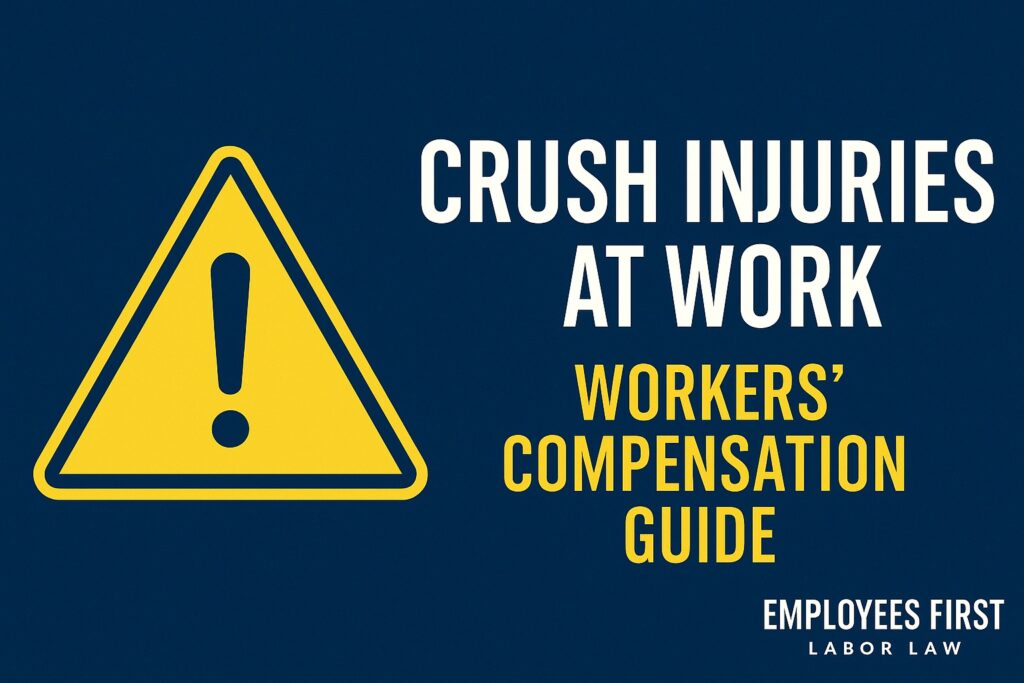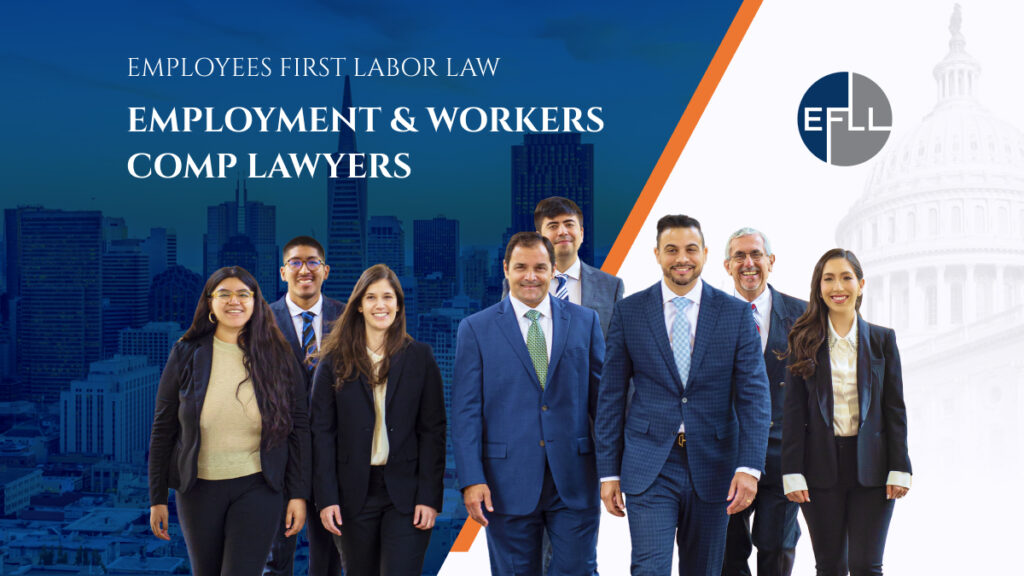
Introduction: Why Crush Injuries Demand Immediate Action
Crush injuries are among the most traumatic and serious injuries that occur on the job. These injuries involve the compression of body parts—typically hands, arms, legs, or feet—between two heavy objects, causing tissue damage, nerve trauma, bone fractures, and even amputation. Whether you’re working in construction, warehousing, manufacturing, or logistics, a crush injury can change your life in seconds.
At Employees First Labor Law (EFLL), we help injured workers throughout California get immediate medical care, navigate complex claims, and secure full compensation after a serious crush injury on the job.
Common Causes of Workplace Crush Injuries
Crush injuries can result from a wide range of industrial or occupational hazards. The most common workplace causes include:
- Caught-in or caught-between machinery
- Forklift or heavy equipment accidents
- Falling objects or collapsing structures
- Unsecured materials or pallets tipping over
- Malfunctioning hydraulic or mechanical equipment
- Improper lockout/tagout procedures
- Hands or feet caught in conveyor belts or press machines
Even with safety protocols in place, split-second lapses or mechanical failures can result in devastating, life-changing injuries.
Types of Crush Injuries
Crush injuries can vary from moderate to catastrophic, depending on the force, duration, and body part involved. Common outcomes include:
- Open or compound fractures
- Nerve damage or neuropathy
- Compartment syndrome (a medical emergency that can cause tissue death)
- Lacerations and soft tissue damage
- Traumatic amputation
- Severe bruising and internal bleeding
- Crush syndrome (a life-threatening systemic condition caused by toxins from muscle breakdown)
These injuries often require emergency surgery, prolonged hospitalization, physical rehabilitation, pain management, and in some cases, prosthetics or long-term disability support.
Workers’ Compensation Rights After a Crush Injury
Under California law, if you suffer a crush injury while performing job duties, you are entitled to workers’ compensation benefits—regardless of fault. This includes:
- Medical treatment (surgery, hospitalization, rehabilitation, devices, medications)
- Temporary disability payments (wage replacement while off work)
- Permanent disability payments (for lasting physical limitations)
- Vocational rehabilitation or job displacement benefits
- Mileage reimbursement for medical travel
- Future medical care
You may also be eligible for 100% permanent disability or a life pension if the injury results in complete loss of use of a limb or extremity.
What Employers and Insurers May Try to Do
Unfortunately, many injured workers face unnecessary barriers after a serious crush injury. We’ve seen:
- Delays in emergency medical authorization
- Pressure to return to work before medically cleared
- Denials of surgery or rehabilitation requests
- Underreporting of injury severity by company doctors
- Attempts to blame the worker for “horseplay” or “safety violations”
- Low settlement offers before full recovery
At EFLL, we protect your rights and make sure your injury is documented, your treatment is authorized, and your settlement reflects the full extent of your losses.
How Crush Injuries Are Evaluated Medically and Legally
Medical evaluators—including treating physicians, QMEs, or AMEs—will assess:
- Loss of range of motion and strength
- Nerve and vascular damage
- Functional loss of the limb or digit
- Pain, scarring, and psychological impact
- Future medical needs (e.g., prosthetics, physical therapy)
Legal valuation is based on your Permanent Disability Rating (PDR) and ability to return to work. EFLL works closely with top-rated medical-legal experts to ensure your rating reflects the true impact of your injury.
What Is a Crush Injury Case Worth?
Crush injury cases often result in high-value settlements, especially when the injury leads to:
- Amputation or loss of limb function
- Permanent work restrictions
- Need for lifetime care or prosthetics
- Inability to return to previous employment
Estimated 2025 Case Value Ranges:
| Injury Severity | Estimated Settlement Range |
|---|---|
| Moderate crush injury with recovery | $40,000 – $75,000 |
| Severe crush with partial disability | $100,000 – $250,000 |
| Amputation or total limb loss | $250,000 – $750,000+ |
| 100% permanent disability | Lifetime payments; present value $1M+ |
Each case depends on the injury, age, occupation, medical documentation, and whether you’re represented by experienced legal counsel.
EFLL’s Strategy for Crush Injury Claims
We help crush injury victims by:
- Demanding immediate medical treatment and diagnostic testing
- Challenging denied or delayed Requests for Authorization (RFAs)
- Coordinating with orthopedic, vascular, and trauma specialists
- Documenting impairment with QME or AME evaluations
- Securing permanent disability ratings and structured settlements
- Pursuing future medical care for prosthetics, pain management, and therapy
- Litigating aggressively if the employer or insurer delays, denies, or underpays
We’ve secured six- and seven-figure results for workers who suffered hand amputations, foot crushes, and machinery-related trauma.
Tips for Workers After a Crush Injury
- Report the injury immediately – Even if it’s obvious, file a DWC-1 claim form.
- Get treated by a qualified specialist, not just the company clinic.
- Don’t rush to settle – You may not know the full extent of disability right away.
- Document your symptoms – Especially pain, nerve damage, and functional loss.
- Hire experienced legal representation – Crush injuries are high-stakes cases.

Final Thoughts
A crush injury at work isn’t just a medical emergency—it’s a life-altering event that demands strong legal protection. At Employees First Labor Law, we’ve helped countless workers recover full and fair compensation after traumatic workplace accidents.
If you’ve suffered a crush injury, we’re here to take the pressure off your shoulders and fight to get you the treatment, disability benefits, and long-term support you need to rebuild your life.



